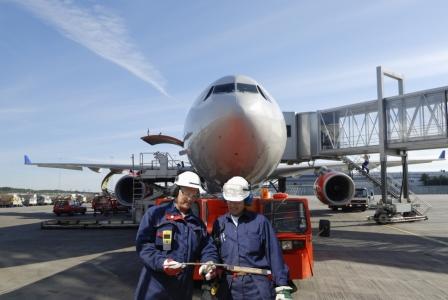Sofema Aviation Services www.sassofia.com is pleased to offer a new training with a specialised and specific subject matter – Aviation Quality & Safety Auditing & Risk Assessment Training for Trainers.
The Implementation of Maintenance & Quality Assurance Audit Processes was an early development, This was followed by the introduction of Operational Quality Assurance after the implementation of JAR OPS in 1998, We are now in the Implementation phase of SMS.
The current thinking has identified the importance of Safety Management Activities to deliver both proactive and predictive behaviours within the organization, to identify risk and exposure within the business.
The need for both an effective SMS system and a strong Quality System is a fundamental attribute of an effective Aviation Organization.
To also realize that regulatory compliance is a small part of the delivery of an effective Quality System. With Performance Auditing the Organization can strive for optimizing processes which are both efficient and cost effective.
A key to the Successful Management of Quality and Safety is the development of Competence management and oversight processes.
To Developing an organizational capability to deliver Quality & Safety Auditor training to include Hazard and Risk Assessment will benefit the organization and allow the Training and deployment of internal auditors
Aviation Quality Systems have been around for many years, A Proactive SMS system has been mandated by ICAO since Jan 2009, the Development of Safety Management Systems SMS continues to gain in prominence and importance in both Airline Operations and Maintenance Organisations.
With reference to Quality Auditing – any area of the business which may have the direct involvement of the Quality Manager or Quality department will require independence of audit, so an external to the department trained auditor is the ideal solution.
With reference to Safety Auditing – we have to distinguish between Auditing of the Safety System (Regulatory Compliance and Organisational Compliance with the various requirements) and Safety Assessment which is related to the understanding of the varius operational risks faced by the business.
In respect of Operational Risk Assessment the process is typically required in three different contexts:
a) Individual safety Events may reflect a high level of risk and consequently require urgent action. Therefore all incoming events need to be risk assessed. – This step is called Event Risk Classification (ERC).
b) The Hazard Identification process may lead to the identification of Safety Issues, which need to be risk assessed to determine what actions, if any are needed. This step is called Safety Issue Risk Assessment (SIRA).
c) From time to time there will be a need to carry out Safety Assessments, typically related to a new or revised operational activity (e.g. new destination). The activity needs to be risk assessed at the planning stage, according to the “Management of Change” process of the company.
For additional details please email office@sassofia.com
Tags:
aviation, Aviation Quality, aviation safety, Implementation of Maintenance & Quality Assurance Audit Processes, Quality Assurance, Risk Assessment, Safety Auditing, Safety Management Activities, Safety Management System, Aviation Safety, SMS training





